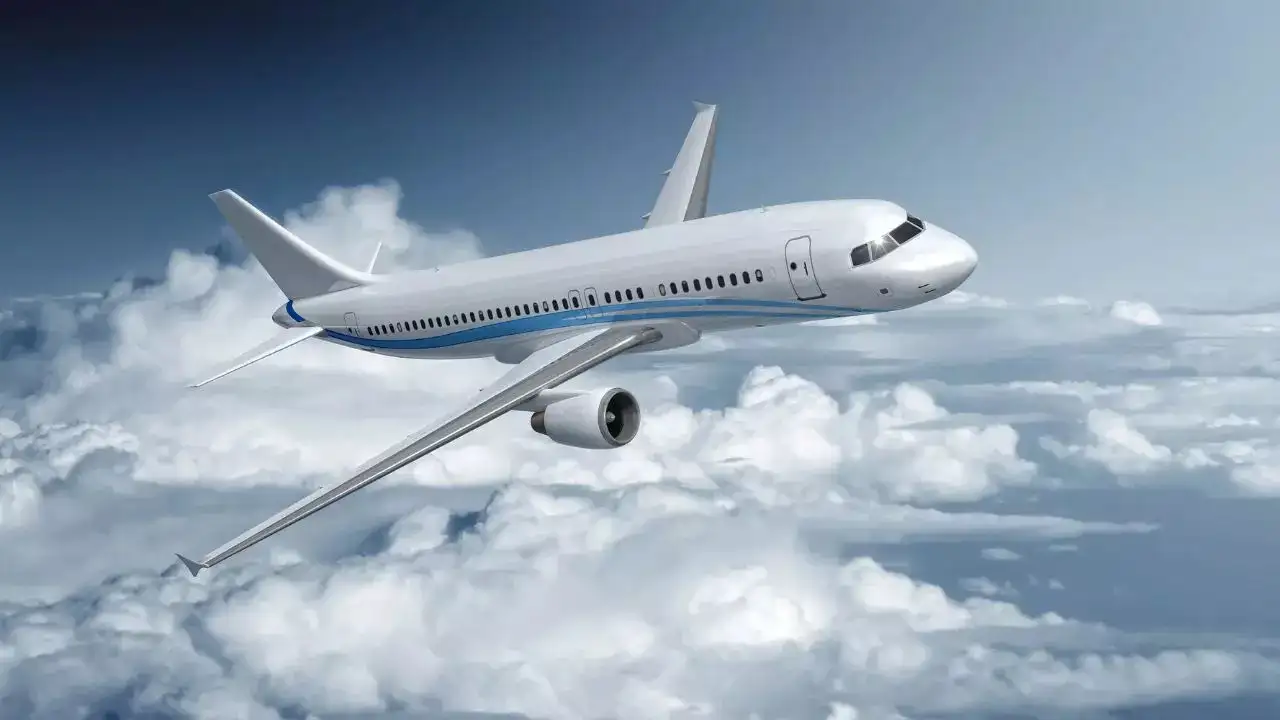Bare legs flying poses more health risks than most passengers realize. A 2015 study revealed airplane lavatory flush buttons contain a shocking 265 colony-forming units (CFU) per square inch—significantly higher than the 172 CFU found on home toilet seats. We’ve all seen fellow travelers walking barefoot to the bathroom, but flight attendants consistently describe this practice as “completely unsanitary” and “unhygienic.”
In fact, infectious disease experts like Dr. Dahlia Philips warn that bare legged passengers expose themselves to numerous pathogens. Walking with exposed skin puts you at risk since bacteria, viruses, and fungi can enter through even minor cuts or abrasions. Though flying legs-exposed might feel comfortable during long flights, Dr. Gonzalo Bearman suggests taking precautions similar to those for public bathrooms—using toilet seat covers, avoiding face touching, and applying hand sanitizer afterward. Certainly, these simple habits can significantly reduce your chances of picking up infections during air travel.

Flight attendants warn against bare legs on planes
Flight attendants across major airlines consistently express frustration over passengers who expose bare legs and feet while flying. “For the love of all things, wear shoes,” one anonymous flight attendant told Business Insider. “Walking throughout the aircraft barefoot or even with socks is disgusting”.
Why exposed skin raises concerns mid-flight
The concerns about bare legs extend far beyond mere etiquette. Flight professionals primarily worry about three critical issues:
Health hazards: “Passengers these days can be quite messy and we see everything from spills to dirty diapers thrown on the floor,” notes a veteran flight attendant from a major carrier. Moreover, what appears to be water on lavatory floors is often something far worse. “It’s not water that you’re seeing on the bathroom floor sometimes. It’s probably bodily fluids that you’re walking in,” warns flight attendant Leysha Perez.
Emergency evacuation risks: Safety expert Christine Negroni emphasizes that most airplane crashes are survivable, yet passengers without proper foot protection face serious hazards. “If you don’t have shoes on, you’re more likely to have your feet injured. It’s as simple as that”. Additionally, flight attendant Killough states bluntly, “Say we have an evacuation and you have to go down the slide – your butt cheeks are going to be sizzled off!”
Radiation exposure: Aircrews already face increased skin cancer risk due to UV radiation at high altitudes. At every additional 900 meters above sea level, there is a 15% increase in radiation intensity, making it twice as intense at cruising altitude compared to ground level. Consequently, exposed skin becomes particularly vulnerable – flight crews flying for just one hour at 30,000 feet receive the same UV-A radiation as a 20-minute tanning bed session.
Common scenarios where passengers go bare-legged
Flight staff regularly observe several problematic situations involving bare-legged passengers:
- Bathroom visits: Perhaps most concerning is passengers walking barefoot to lavatories. Elizabeth Regan, a commercial airline flight attendant, notes this happens “all the time”. Hilary Clark, an inflight services director, finds this habit “quite concerning” given what she learned in training about lavatory floor liquids.
- Feet propping: Recently, a business-class traveler made headlines when they removed their shoes and placed bare feet on the in-flight entertainment screen. According to travel blog Miles Quest, this passenger repeatedly visited the bathroom barefoot before returning to prop their feet up again.
- Aisle exposure: Some passengers dangle bare feet into aisles, creating hazards. “If you are in an aisle seat and your foot is hanging off the side, you might not be aware of the beverage cart coming down the aisle ready to roll right over your bare toes,” explains one flight attendant. Furthermore, Kris Major notes, “On a night flight particularly, if you put your feet in the aisle and you’ve got dark socks on, we won’t see you, and we’ll trip over you”.
Experts explain hygiene risks of flying with bare legs
Microbiologists and healthcare professionals highlight serious concerns regarding bare legs flying, pointing to research that reveals alarming contamination levels throughout aircraft cabins.
How airplane seats and surfaces harbor bacteria
Aircraft cabins function as ideal environments for microbial transmission. Studies indicate that seat trays often harbor bacteria like MRSA and viruses including influenza. Meanwhile, armrests—especially those on aisle seats—become contaminated by numerous passing passengers.
“Airplanes often aren’t able to be thoroughly cleaned between flights, meaning you’re exposed to germs from current and previous passengers—potentially from around the world,” notes one industry report.
Research reveals that people themselves are the primary source of airborne bacteria in aircraft cabins. Most microorganisms isolated from occupied spaces, including planes, originate from human skin, scalp, nose, and mouth.
Besides this, settled dust in cabins contains soil particles, fabric fibers, human skin fragments, and potentially harmful microorganisms. This creates an invisible ecosystem of pathogens that thrive on unsuspecting bare-legged travelers.
What infectious disease doctors say about skin contact
Infectious disease specialists express particular concern about skin-to-surface contact on aircraft. “Walking barefoot exposes your feet to bacteria, viruses and fungi that can enter through cuts or abrasions,” explains Dr. Dahlia Philips, an infectious disease physician.
Even more alarming, these pathogens aren’t just limited to feet. As one infectious disease expert notes: “Bacteria from the bathroom can also track into the cabin on the bottom of our shoes”.
Another study discovered the flush button in airplane toilets had 265 colony-forming units per square inch—substantially higher than the 172 CFU found on home toilet seats. Without proper barriers, these pathogens easily transfer to exposed skin.
Why socks or pants offer a protective barrier
Medical professionals uniformly recommend clothing barriers as essential protection. “Long pants serve as a protective barrier” against unknown contaminants on airplane seats.
For those concerned about foot protection, experts suggest “at least thick socks should be worn on a flight, it’s the minimum amount of protection” considering “how many bacteria or critters could be nesting in that plane carpet”.
Nevertheless, some fungal infections like tinea pedis (athlete’s foot) can potentially penetrate thin socks under the right conditions. Therefore, comprehensive coverage remains the safest approach for anyone concerned about hygiene during air travel.
Flight etiquette suffers when passengers go bare-legged
Beyond health concerns, passengers exposing bare legs on flights creates significant social friction in aircraft cabins. Recent surveys reveal a troubling 12% increase in passenger complaints specifically related to bare feet and legs, with most citing issues of odor, visual unpleasantness, and sanitation worries.
How it affects other passengers’ comfort
Social media platforms like TikTok regularly feature videos of travelers sharing uncomfortable experiences sitting near bare-legged passengers. These posts have prompted widespread calls for better education on proper airplane etiquette.
The human foot contains over 250,000 sweat glands capable of producing up to a pint of perspiration daily, creating potential odor issues in confined cabin spaces. This becomes particularly problematic during longer flights where passengers might spend hours seated next to someone with exposed legs.
“From an etiquette standpoint, it is rude to walk about barefooted in a public place as many germs can be transmitted from your feet,” explains Jacqueline Whitmore, a Florida-based etiquette expert. Similarly, etiquette consultant Jamila Musaveya notes that such behaviors “can feel invasive for people around you, especially in such a confined space”.
Flight crew perspectives on in-flight hygiene norms
Flight professionals express strong opinions on this matter. “It’s disrespectful to your fellow passengers and to the crew,” states J. Neil, a flight attendant with 34 years of experience. First-class cabins have likewise seen an uptick in these incidents, prompting stricter policies.
Airlines increasingly enforce clear boundaries regarding exposed skin. Southwest and JetBlue specifically prohibit passengers over age 5 from going barefoot unless they have a disability requiring it. Indeed, many carriers reserve the right to remove non-compliant travelers under their contracts of carriage.
As one flight attendant advised: “A brief, polite question, such as ‘Can you please move your shoes?’ Or ‘Would you mind putting your shoes back on?’ might be all you need”. Alternatively, they recommend contacting cabin crew, who “have been trained to handle situations like this”.

What passengers can do to stay safe and respectful
Protecting yourself during air travel requires thoughtful clothing choices and preparation. Frequent flyers and medical experts agree that covering bare skin is essential for both hygiene and safety during flights.
Simple clothing choices to avoid skin exposure
First, opt for natural fiber clothing over synthetic materials. Natural fabrics are significantly safer in emergencies as synthetic fibers can “melt on your skin or cause serious burns” in case of fire. Cotton, silk, and wool provide both comfort and protection.
Long pants rather than shorts or skirts offer crucial protection against germs on seats that “thousands of other people have sat on”. Many travelers specifically wear pants because they “help them avoid contact with surfaces that may harbor bacteria”. For optimal comfort and safety, choose:
- Loose-fitting trousers or joggers that allow proper blood circulation
- Breathable fabrics with moisture-wicking qualities
- Clothing that covers ankles completely
Closed-toe shoes are non-negotiable regardless of destination climate. “Who knows where and in what conditions you’ll land,” notes one safety expert. Remember that high heels must be removed during evacuations as they “can puncture the slide”.
Tips for long-haul comfort without going bare-legged
Layering is key to managing unpredictable cabin temperatures. “Even when it’s warm outside, air-conditioned airplane cabins can freeze,” making additional layers essential. A light jacket, shawl, or cardigan allows you to adjust throughout your journey.
Compression socks promote circulation and reduce swelling, especially important on flights where you’re seated for extended periods. These socks “can help prevent blood clots” and leave you feeling more refreshed upon arrival.
Many former leggings-wearers have switched to flowy pants after experiencing discomfort. “I had deep indentations from where the seams had been, my stomach was cramping after being constricted for hours,” reports one frequent flyer who now exclusively wears loose-fitting pants.
Why pre-boarding preparation matters
Thoughtful preparation prior to boarding significantly improves your flight experience. “A proper airport ensemble should be tailored for optimum functionality, keeping you ideally comfortable throughout your travel journey”.
Planning ahead allows you to pack essential items like slip-on shoes for security checks and extra layers for temperature changes. Although often overlooked, carrying a clean pair of socks enables you to remove shoes comfortably during long flights without exposing bare feet.
At minimum, Dr. Mike Ren emphasizes that “shoes should be worn while flying” and recommends considering a clothing change upon arrival for peace of mind, though the primary infection risks come from surfaces on and around the plane.
Conclusion
Taking Precautions for Healthier Air Travel
Throughout this examination of bare legs during flights, several significant concerns have emerged. Undoubtedly, the health risks associated with exposed skin on airplanes extend far beyond mere discomfort. Medical evidence clearly demonstrates how airplane surfaces harbor dangerous pathogens, while flight attendants consistently warn against barefoot bathroom visits and unsanitary practices.
Additionally, emergency evacuation scenarios pose substantial dangers for inadequately protected passengers. Consequently, those wearing proper footwear and clothing stand a better chance of emerging unscathed during critical situations.
Though comfort remains important during travel, safety should never be compromised. Rather than exposing bare skin, we recommend wearing natural fiber clothing that offers both protection and breathability. Furthermore, closed-toe shoes provide essential safeguards against unseen contaminants while compression socks help maintain proper circulation during long flights.
Last but certainly not least, respecting fellow travelers through appropriate attire creates a more pleasant experience for everyone. Most airlines now enforce specific guidelines regarding passenger clothing, particularly concerning bare feet. Therefore, making thoughtful clothing choices before boarding not only protects your health but also demonstrates consideration for those sharing your journey.
Air travel presents enough challenges without adding preventable health risks. By maintaining covered legs and proper footwear, passengers significantly reduce their exposure to harmful bacteria while ensuring they remain prepared for unexpected situations. After all, arriving at your destination healthy should be just as important as arriving on time.


